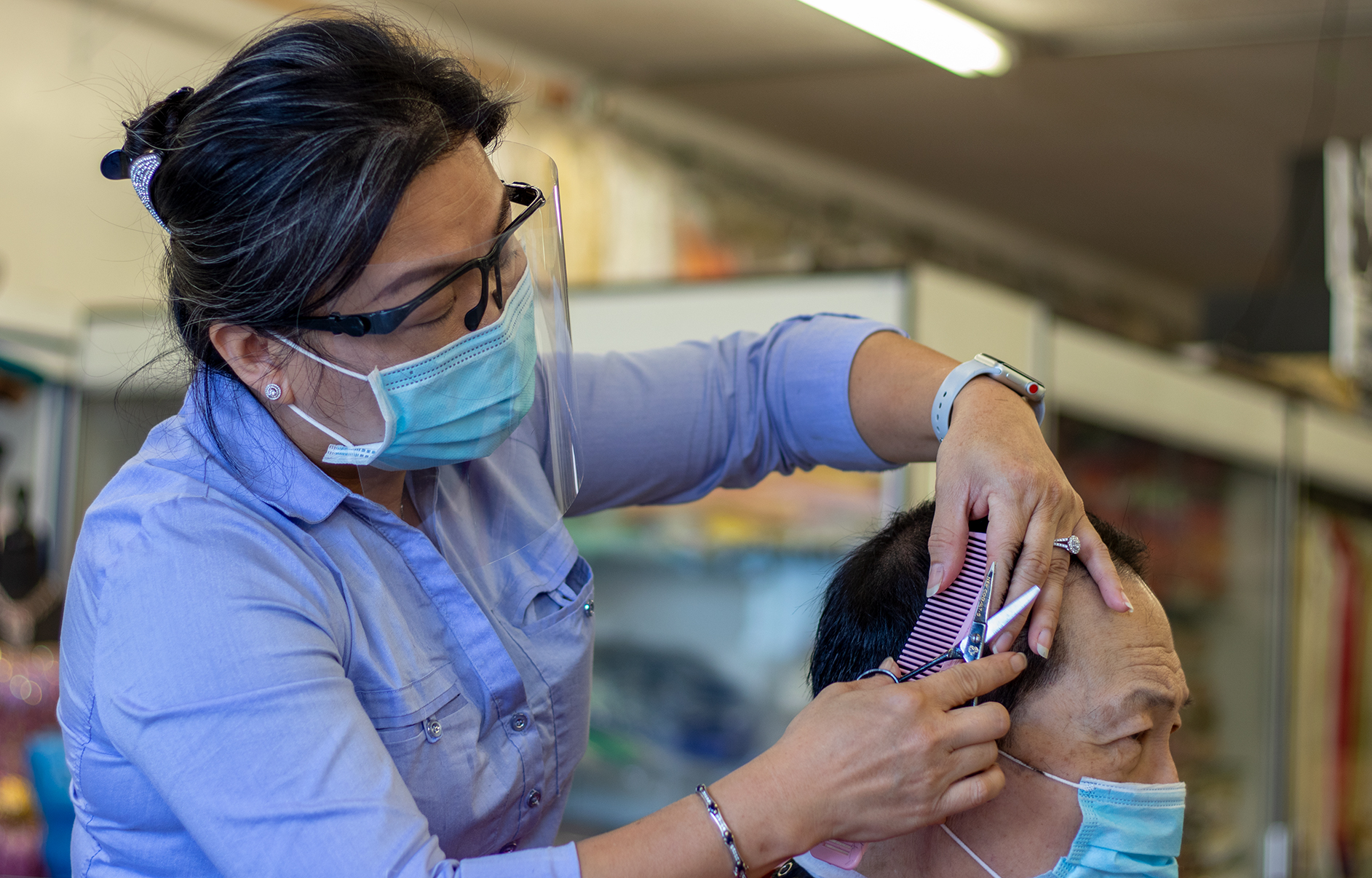CalMatters is a nonprofit, nonpartisan newsroom committed to explaining California policy and politics.
Today, as COVID-19 case rates in California have jumped to their highest levels yet—more than six times the peak of the delta variant wave—updated workplace rules are kicking in to better help protect workers vaccinated against COVID-19.
The revised rules come from the California Division of Safety and Health—also known as Cal/OSHA—which regulates health and safety in California workplaces.
Changes include:
Testing: If there’s an outbreak at work, employers need to make FDA-approved COVID tests available to exposed employees at no cost, during paid time—and now that also goes for vaccinated, asymptomatic workers who were exposed.
Tests can no longer be self-administered and self-read. In other words, workers can’t take a test at home by themselves. Tests that are processed by a lab, or observed by a medical professional during a telehealth appointment, or administered and observed by medical professionals or an employer are still okay.
Who gets sent home after exposure: Previously, if a fully vaccinated person had close contact with a COVID-positive person, but didn’t develop symptoms, they didn’t need to be sent home from work. Now, vaccinated asymptomatic people need to be sent home from work unless they wear a mask and maintain 6 feet of distance from others for two weeks.
Updating what counts as a mask: If workers choose to wear a fabric mask, rather than a surgical or medical one, the new rules clarify that it needs to be sufficiently thick and tightly woven to not let light pass through it when held up to a light source.
The rules also require employers to ensure workers wear masks as required by California’s public health department. On Dec. 15, a new statewide mask mandate that includes workplaces went into effect, and it’s slated to remain in place until Feb. 15. Workers need to wear masks indoors, but if a worker is alone in a room with a closed door, or if the workplace is a single person operation, masks aren’t needed.
Right now, employers aren’t required to offer workers additional sick leave for COVID. In March, Gov. Gavin Newsom signed a law requiring employers with 25 or more workers to offer up to 80 hours of supplemental paid leave for COVID. But that law expired in September, leaving some workers without the ability to take days off to recover from the virus, or to quarantine if they were exposed. Federal guidelines recommend that anyone who tests positive for the virus quarantine for five days. But without any additional COVID sick leave, workers in California are legally entitled to just three days of paid sick leave annually.
Some legislators are pushing to bring back supplemental COVID sick leave in 2022, and the governor said working on sick leave was a “top priority” for him when he rolled out his budget proposal in early January.
Business pushes back on California COVID rules
Business and industry advocates protested the new rules at a public meeting in mid-December. Melissa Patack, vice president of state government affairs for the Motion Picture Association, said the new rules requiring asymptomatic, vaccinated workers who were exposed to maintain 6 feet of distance would be challenging for her industry.
“Those who work closely with actors such as those who style hair, those who apply makeup…cannot maintain six feet of distance from the actor when doing their work,” she said.
Robert Moutrie, a policy advocate with the California Chamber of Commerce, pointed out that the changes mean employers are on the hook for providing even more tests to employees, and tests are in short supply.
What comes next
During that December meeting, business advocates critiqued the system of updating temporary rules every few months, saying it was hard for employers to keep up.
The new rules are set to expire in mid-April. Originally, regulators were going to be forced to come up with a longer term solution at that point, but just hours after the new temporary rules were approved in December, Gov. Newsom issued an executive order allowing regulators to do one more temporary revision and extension of the rules.
How, exactly, are employers supposed to ensure workers’ fabric masks meet the new standard of not letting light pass through? And what are companies supposed to do if they can’t acquire enough COVID tests? As the revised rules go into effect, figuring out how to follow them may be no simple task.
COVID-positive patients in Los Angeles County hospitals tops 4,000

